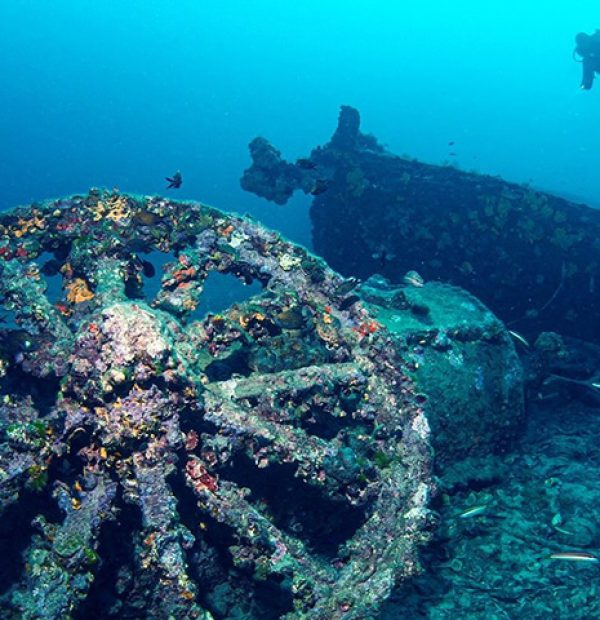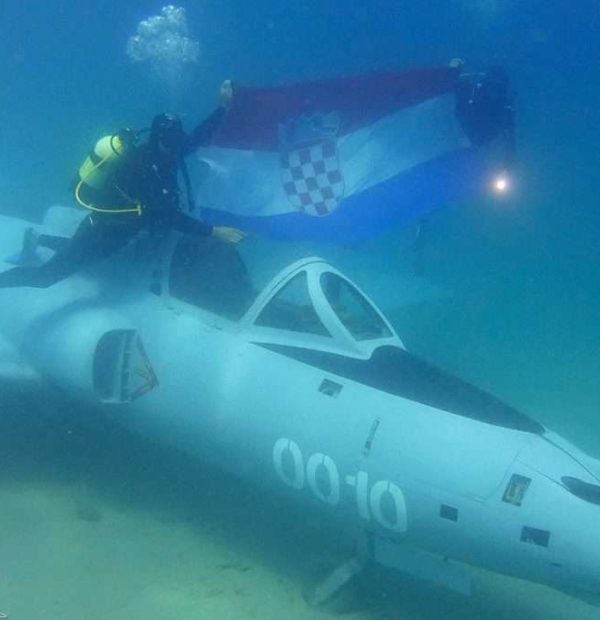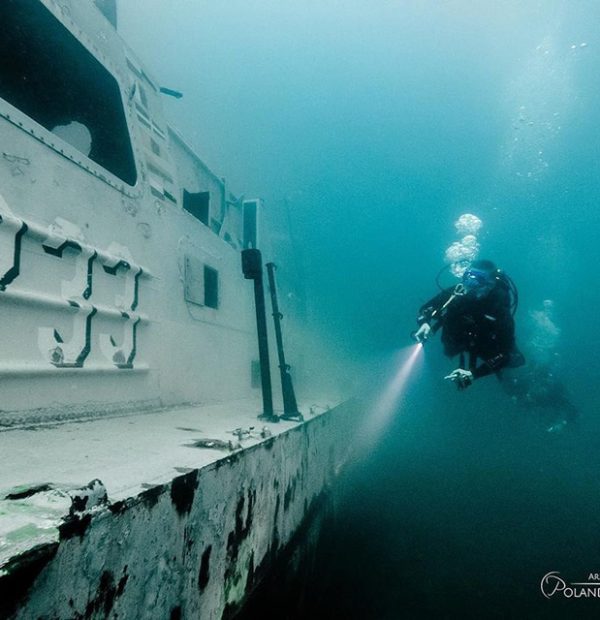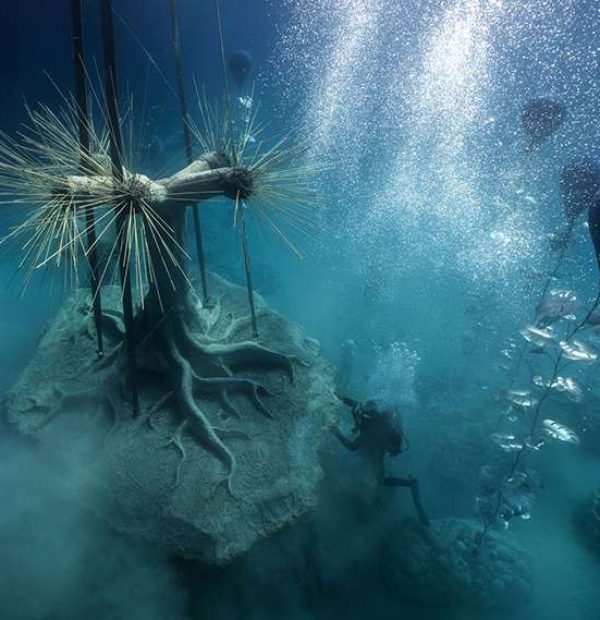Wednesday, 15 May 2024
Menu
The North of Norway is a place where in 1940 very intensive warfare took place. Due to its strategic importance, the British Royal Navy and the German Kriegsmarine clashed here.
Narvik is the name of a municipality and city in the far north of Norway, 240km inside the Arctic Circle. During World War II, the location and harbour character of the town made it important for both the Allies and the Germans to gain control of the region, as it was the only year-round road used to transport iron ore from the mines of neutral Sweden – at the time the primary raw material for armaments.
During operations conducted by both sides, there were 3 major clashes. More than 50 wrecks remain from these battles. As a result, the waters of the Norwegian Sea have become the final resting place for many ships, vessels, aircraft and their crews, and thus a very interesting place to conduct an underwater history lesson.
The important information for divers is that relatively shallow and in a small area, there is a huge amount of wreckage worth attention. In practice, it looks so that during one dive, we can see even 2-3 wrecks!
In the harbour itself, a very popular sight is the wreck of the merchant ship Romanby, sunk by British ships during the attack on the harbour on 9 April 1940. The wreck is one of the few that rests almost completely on the bottom. At a depth of 12-28m, the hull extends to almost 128m. The whole ship lay on the bottom on an even keel. The corridors, various rooms and the engine room are rarities easily accessible, but for slightly more experienced divers. Coming to the stern, we find a large steering wheel and a protruding propeller shaft.
We invite you to see the photo gallery by Maciej Bujalski – Narvik wrecks
Also in the harbour, the German cargo ship Neuenfels found its final resting place. It is the largest vessel to have been sunk in the surrounding waters – 143x18m. Like the Romanby, Neuenfels rests at a depth of less than 30m (10-27m). This creates an opportunity for us to explore the wreck without any problems and in an unhurried manner. In the vicinity of Neuenfels, we can come across the remains of its masts and superstructure, which were blown up later in order not to pose a danger to navigation.
A very interesting dive can be planned not far from the harbour. In this area we can find three Kriegsmarine destroyers – Anton Schmitt, Diether von Roeder and Wilhelm Heidkamp. The shallow depth (max. 24m) and short distances between the wrecks allow you to see them in just one dive! The site is easy to find, thanks to a buoy leading to the bridge of the Wilhelm Heidkamp, which rests between the other two ships. The completely destroyed stern section should be compensated for by the view of the ship’s bow. Perfectly preserved, it is a great object for photos. We sail perpendicularly to the port side and reach the remains of Diether von Roeder. There is not much to admire here, as both the bow and the stern have been blown up.
Sailing to the right of the Wilhelm Heidkamp, we soon come across the wreck of the destroyer Anton Schmitt lying on the starboard side. The object is in quite a good condition, the stern part was blown up, but still we will find many elements worth seeing.
Another dive in the harbour area, where we can kill the proverbial “two birds with one stone”, is an underwater descent to the wrecks Strassa and Martha Hendrik Fisser. They are separated by a distance of about 30m. The Swedish transport ship, Strassa, is at a depth of 15-28m and is ideally situated on her keel. Although the ship was partially sunk and was later blown up by the Germans, the bridge is still in perfect condition. Visitors to the Strasse are also impressed by the heart of the ship, namely the engine room and engine. The sterns of both vessels are connected by a rope, another convenience for divers visiting the area. The Marthe Hendrik Fisser can be recognised by the very characteristic staircase that curves into the rooms inside the ship. As you continue along the ship you will pass the hold, the remains of the superstructure and the engine room, which you can enter.
An interesting item for the next dive is the wreck of the German destroyer type Karl Galster – Hermann Kunne, sunk north of Narvik in Herjangs fjord. The remains of the ship start just below the surface and reach a depth of 40m. When diving here, you should focus on the stern, where the rudder and the guides for dropping depth bombs are beautifully exposed.
We invite you to see the photo gallery by Maciej Bujalski – Narvik wrecks
Rombakenjord is a rather unusual place, which cannot be mistaken with any other in the area. Already on the shore, the bow section of the German destroyer Georg Thiele haunts you and does not let you forget the events of the last century. The wreck extends deep into the fjord, to a depth of 50m. The part of the wreck that remains on the surface is so accessible that it could be climbed on foot from the shore. In addition to the Georg Thielea, three other destroyers rest in this fjord. These are Bern von Arnim, Hans Ludemann and Wolfgang Zenker. Those who would like to dive here, unfortunately, have to curb their enthusiasm, as there is a total ban on diving on the aforementioned vessels.
Also inaccessible is a Polish accent from that period – the wreck of the bombed ship ORP Grom. Due to both its depth and respect for the fallen sailors, the vessel is strictly forbidden to dive. Exceptions are research missions and scientific projects, thanks to which we can see what condition Grom is in today and what really caused it to sink.
A few words about bureaucracy related to diving in the Narvik area. For each descent we need appropriate permits, which can be obtained at the harbour master’s office. In order to safely and without any problems go under the water, we will have to register with the harbour authority and fill in the appropriate documents.
As for the diving in this area itself, it gives a lot of pleasure. This is because the water clarity is definitely better than in our native Baltic. Another issue, not without significance in the exploration of wrecks, is their availability. In Norwegian waters we will not find cobwebs of nets wrapping the wreck in a tight cocoon, and most positions are quite shallow. The third significant advantage is the small area where we will dive. This creates an opportunity to see several vessels during one dive, and this is what counts most for us – unforgettable impressions.
The biggest problems we will face when deciding to visit Norway will be: getting there (suggested plane flight, or driving through Sweden), prices for gas and boat rental, and not enough time to see everything we would like to.
We invite you to see the photo gallery by Maciej Bujalski – Narvik wrecks
Photo: Maciej Bujalski










Welcome to DIVERS24.COM, your daily source of scuba news, freediving, scuba diving information, and equipment reviews. Our comprehensive coverage of the dive industry from A to Z provides you with all the latest scuba news, training updates, underwater photography tips, and everything else related to scuba diving. Whether you’re a beginner or an experienced diver looking for more knowledge about scuba gear or techniques – we’ve got it covered! With our in-depth articles written by experienced divers who have been there and done that, you are sure to find exactly what you need here at Divers24.com. Dive into scuba news today!
Underwater Media Sp. z o.o.
Szafarnia 11/F8,
80-755 Gdansk, Poland
Welcome to DIVERS24.COM, your daily source of scuba news, freediving, and scuba diving information. Sign in for a weekly news update and discount coupons for dive gear and apparel.
@2023 - underwatermedia.pl. All Right Reserved. Designed and Developed by Tworzenie stron internetowych Gdansk

The Divers24 portal is currently the largest online medium treating diving in Poland. Since 2010 we have been providing interesting and important information from Poland and around the world on all forms of diving and related activities.
Contact us: info@divers24.com